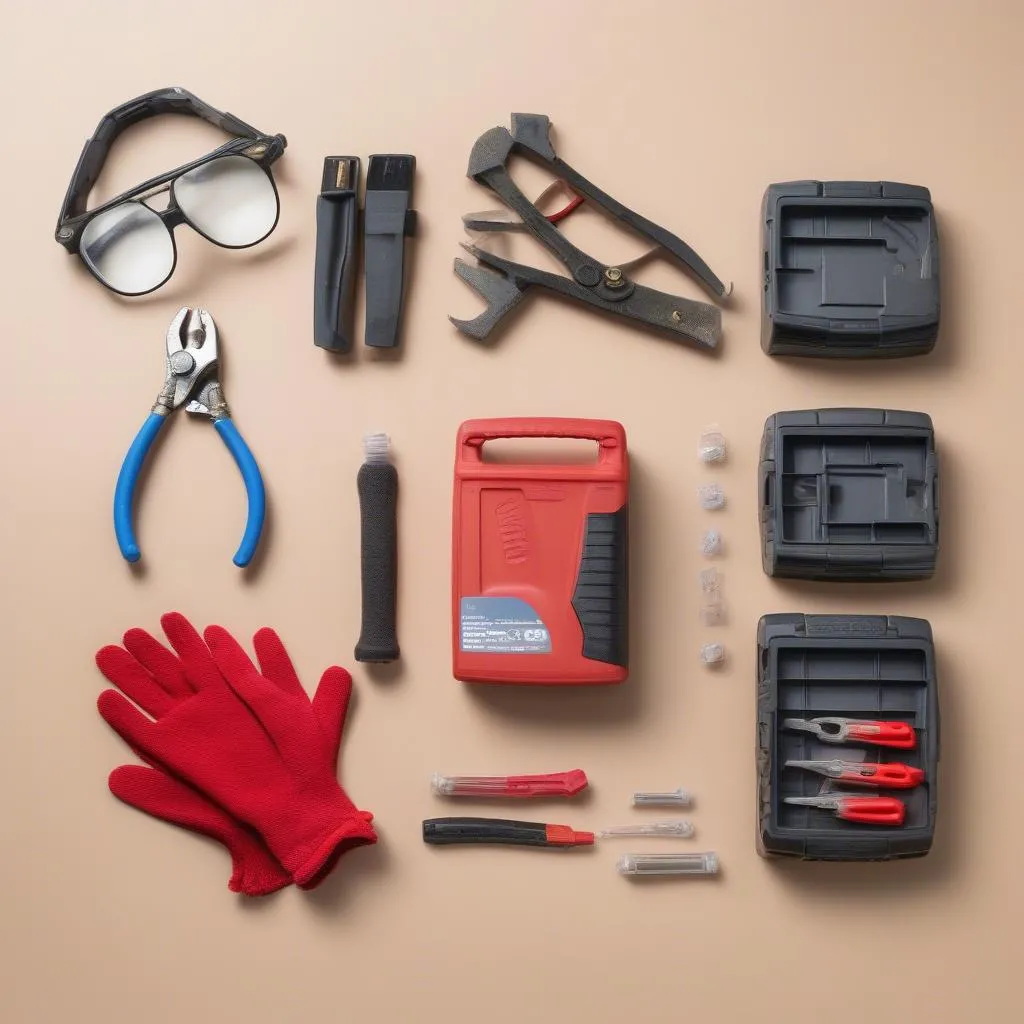Have you ever found yourself stranded on the side of the road, your car refusing to start? You check the basics: gas, oil, and then… the battery. A dead battery can be a real pain, but it’s something you can usually fix yourself! Today, we’re going to dive into the process of installing a car battery, explaining everything from the basics to some handy tips.
Why Is Installing a Car Battery Important?
Installing a car battery is a vital task for any car owner. A properly installed battery ensures your car starts reliably, and it also prevents potential damage to your vehicle’s electrical system. You might even be surprised by how much it can affect your car’s overall performance.
Think about it this way: the battery is like the heart of your car. It supplies the initial jolt of power needed to start the engine, powering the electrical components and ensuring a smooth driving experience. A faulty or improperly installed battery can lead to a frustrating start, electrical issues, and even damage to your engine.
The Step-by-Step Guide to Installing a Car Battery
1. Gathering the Essentials:
Before you start, make sure you have all the necessary tools. Here’s a list of the essentials:
- New car battery: Ensure it’s the correct size and type for your vehicle. You can find this information in your owner’s manual.
- Battery terminal wrench: This tool is used to loosen and tighten the battery terminals.
- Protective gear: Wear safety glasses and gloves to protect yourself from potential acid spills.
2. Locating Your Battery:
Most car batteries are located under the hood, usually on the driver’s side. Refer to your owner’s manual if you’re unsure of the location.
3. Disconnecting the Old Battery:
Important: Always disconnect the negative terminal first and connect it last. This prevents sparks that could ignite flammable materials.
- Remove the negative terminal: Locate the black negative terminal cable and use the battery terminal wrench to loosen the clamp.
- Remove the positive terminal: Next, locate the red positive terminal cable and loosen the clamp.
- Remove the old battery: Now that the terminals are disconnected, you can safely remove the old battery. Be careful not to drop it or let it make contact with anything metal.
4. Installing the New Battery:
- Position the new battery: Ensure the new battery sits securely in the battery tray. It should fit snugly without any movement.
- Connect the positive terminal: Connect the red positive terminal cable to the new battery’s positive terminal. Tighten the clamp securely.
- Connect the negative terminal: Connect the black negative terminal cable to the new battery’s negative terminal. Tighten the clamp securely.
5. Checking for Leaks:
Inspect the battery for any signs of leakage. If you notice any, immediately clean the area and consult with a mechanic.
Tips for Successful Car Battery Installation:
- Clean the battery terminals: Before connecting the new battery, clean the battery terminals with a wire brush or a piece of sandpaper. This ensures a good electrical connection.
- Apply a thin layer of grease: A small amount of grease on the terminals can help prevent corrosion.
- Check the battery’s fluid level: For traditional lead-acid batteries, ensure the electrolyte level is within the specified range.
- Don’t overtighten the terminals: Tighten the terminals securely, but don’t overtighten, which can damage the battery.
What are the common problems you may encounter while installing a car battery?
Here are some common problems you might encounter when installing a car battery:
- The new battery doesn’t fit: Ensure you have the correct battery size for your vehicle. If it doesn’t fit, you’ll need to purchase the correct type.
- The terminals don’t align: Make sure the battery terminals align with the cable clamps. If they don’t, you may need to adjust the battery’s position in the tray.
- The battery is leaking: If you notice leaking battery fluid, this is a sign of a damaged battery and requires immediate attention.
Other Relevant Questions:
1. How long does a car battery last?
Car batteries typically last 3-5 years, but this can vary based on factors like driving habits, climate, and battery quality.
2. How do I dispose of my old car battery?
Car batteries contain lead and other hazardous materials, so they need to be disposed of properly. Check with your local recycling center or auto parts store for proper disposal guidelines.
3. What is a “jump start” and how do I do it?
A jump start is a temporary solution for a dead battery. It involves using a working battery from another vehicle to jump-start your car. You can find detailed instructions online or in your owner’s manual.
4. How do I maintain my car battery?
Regular maintenance can extend your battery’s life. This includes checking the battery’s fluid levels, cleaning the terminals, and ensuring proper charging.
5. Can I install a car battery myself?
While installing a car battery is generally a simple task, it’s important to feel comfortable with the process and safety procedures. If you’re unsure or feel uncomfortable, it’s best to consult with a professional mechanic.
 Car Battery Installation Tools
Car Battery Installation Tools
 Installing a Car Battery: Step-by-Step
Installing a Car Battery: Step-by-Step
Contact Us for Car Diagnostics Software:
Have questions about car diagnostics software, or need help with your car’s electrical system? Contact us at +84767531508! We’re here to help you diagnose and repair car issues.


